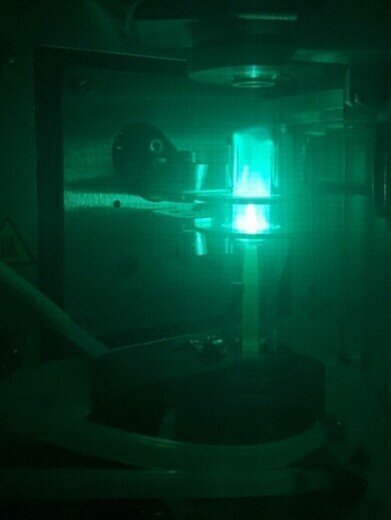Oil analysis
Analysis of Oil Additives Following ASTM D4951 with the Avio 200 ICP-OES
Dec 22 2016
Introduction
When blending base oils and additives for use as lubricants, it is important to know and control the concentrations of certain elements for optimal performance and longer engine life. Because this process is so crucial, ASTM developed a method for monitoring this procedure: ASTM method D4951, which covers barium (Ba), boron (B), calcium (Ca), copper (Cu), magnesium (Mg), molybdenum (Mo), phosphorus (P), sulphur (S), and zinc (Zn). However, not all these elements need to be measured all the time – the blends and additives are specified to meet certain performance specifications which can vary among oil types, depending on their final use.
Oil blending facilities typically analyze 10-40 samples per day to support manufacturing. As a result of the low sample load, small number of elements, and relatively high concentrations, analysis is most commonly performed either by X-ray or ICP-OES, with each technique having its advantages and limitations.
This work will focus on the analysis of additives in new oils using PerkinElmer’s Avio™ 200 ICP Optical Emission Spectrometer1 (ICP-OES), which overcomes limitations of other ICP-OES systems and X-ray analyses.
Experimental
Samples and Standards Preparation
New oil samples were obtained and diluted 10x by weight with V-Solv™ containing 40 ppm cobalt (Co) as an internal standard. Calibration curves were made from a 75 cSt base oil as a blank, two V-23 stock solutions at 100 and 500 ppm (PerkinElmer), and a Metals Additives Standard (MA4) (PerkinElmer) which contains Ca at 5000 ppm as well as P, Mg, and Zn at 1600 ppm. The blank and all standards were prepared the same way as the samples. The MA4 standard was used as the QC sample during the analysis of samples.
Instrument Conditions
All analyses were performed on the Avio 200 ICP-OES running in radial mode, The nebuliser gas flow was adjusted so that the tip of the “green bullet” in the central channel was just below the top flat plate, as shown in Figure 1.
Results and Discussion
Five new oil samples with different formulations were analysed, and the concentrations compared to those obtained from X-ray analysis using ASTM D6443. The results indicate that both analyses gave similar results, thus demonstrating agreement of the results with X-ray. In addition, the relative standard deviations (RSDs) for each measurement were generally 1% or less, with the exception of the low-level analytes (Mg in Oil 3 and 5), where the low intensities resulted in statistically slightly higher RSDs.
Compared to X-ray analysis, the Avio 200 ICP-OES provides several advantages including price, sample throughput, ease of use, and the ability to measure different oil formulations
with calibration standards that do not have to be matched to the composition of each oil. In addition, X-ray analysis of additives in oils suffers from interferences, which require either mathematical or physical corrections, both of which necessitate running additional standards. However, ICP-OES does not suffer from interferences for this analysis, resulting in simpler, faster, and more accurate measurements. Another major difference between X-ray and ICP-OES is the ability to measure high-level samples. X-ray techniques require further dilutions of the sample, while on the Avio 200, the same sample can be run in attenuation mode, which selectively suppresses the signal of only the analyte of interest, without affecting other analytes.
Since a typical blending plant may run about 20 samples per day, a 20-sample stability run was performed where each oil sample was run, followed by the QC sample (MA4) after every five samples. This sequence was repeated so that each oil sample was analysed four times. All QC values were within ± 2%. These results demonstrate the stability of the methodology, allowing a typical oil blending plant to easily perform their daily analyses with the Avio 200 ICP-OES.
Several instrumental considerations of the Avio 200 ICP-OES contribute to its stability. First, the vertical torch means that any non-ionised sample will drain back down the torch rather than
pooling in the injector, which causes quicker buildup of carbon on the injector and torch. The shear gas cuts off the end of the plasma, preventing deposition on the axial window. Although axial mode is not used in this analysis, this feature allows the Avio to be used for other analyses without having to worry about deposition or cone maintenance.
Finally, Avio’s unique Flat Plate™ plasma technology, which forms the plasma (as shown in Figure 1), is very robust and requires no cooling, which leads to the increased stability. The flat plates also reduce argon consumption: only 11.2 L/min of total argon were used for these analyses.
Another important use of the ICP for an oil blending plant is to check other additives used in the oil formulation (such as detergents, dispersants, and viscosity improvers, to name a few)
for elemental contamination that could change the additive levels in the final product.
Conclusion
This work has demonstrated the ability of the Avio 200 ICP-OES to analyse a variety of lubricating oil samples for oil additives in accordance with ASTM method D4951. Instrumental design considerations allow for accurate and stable analysis of different oil formulations against an external calibration curve which did not have to be matched to the specific oil compositions.
Digital Edition
PIN 26.1 Feb/Mar 2025
March 2025
Analytical Instrumentation - Elemental Analysis for Quality and Process Control at Refineries, for Lubricants and Wear Metals in Engine Oils - Synthetic Lubricants: New Developments - Scaling...
View all digital editions
Events
Apr 08 2025 Birmingham, UK
Apr 08 2025 Kielce, Poland
Apr 08 2025 Ravenna, Italy
Apr 08 2025 Southampton, UK
Apr 08 2025 London, UK

.jpg)

















